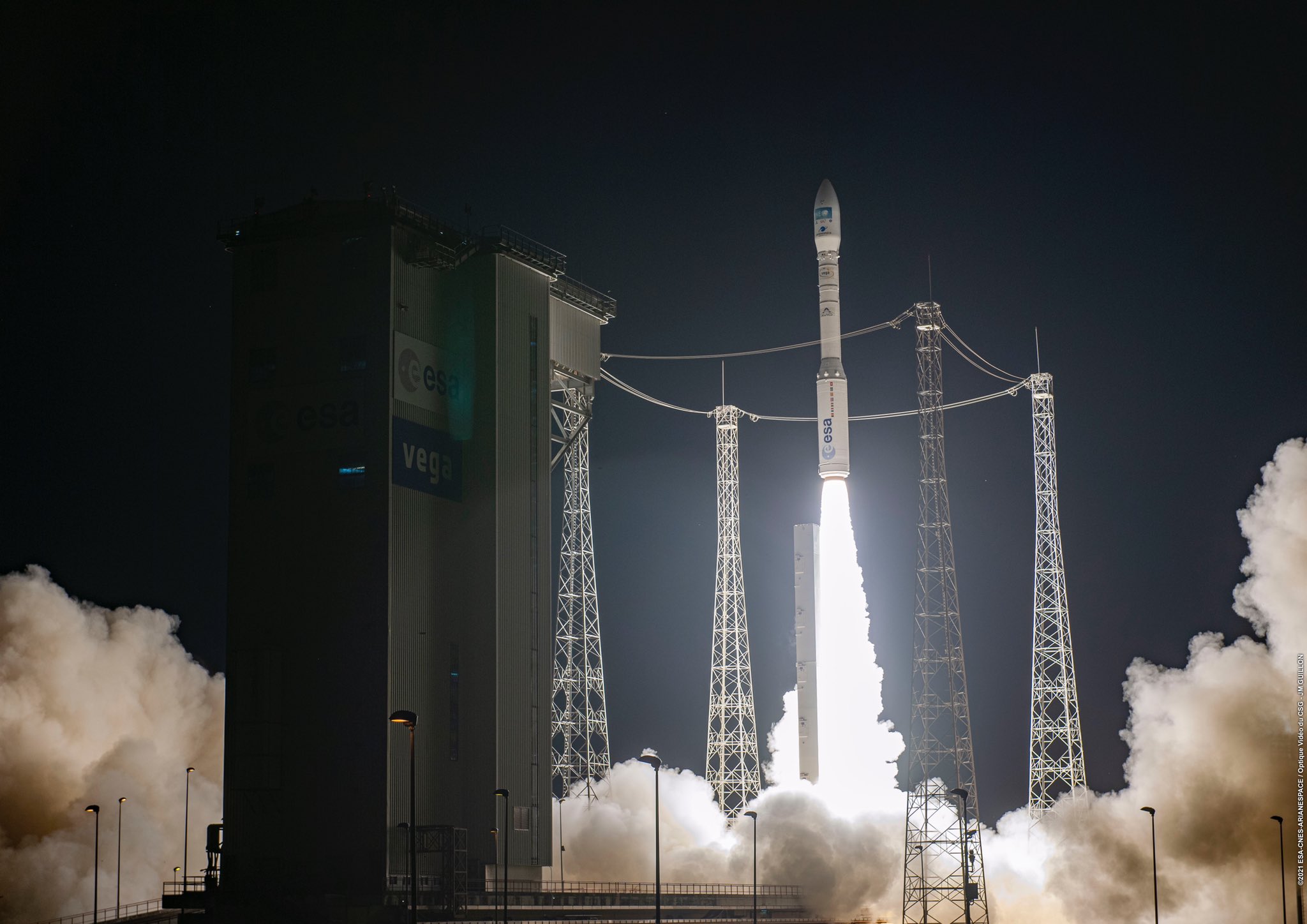Space, all the launches of Europe and China

The European rocket Vega took off from Kourou with Earth observation satellites. And China has launched the first module of the orbiting station for a permanent human presence in space following in the footsteps of the US, Russia and Europe
Mission accomplished for Vega VV18 which put Pleiades Neo 3, the first satellite of the new Earth observation constellation managed by Airbus, into orbit.
The European carrier – designed, developed and built by Avio – has also implemented the deployment of 5 other microsatellites, including the Norwegian Norsat 3 and 4 cubesat for the operators Eutelsat, NanoAvionics / Aurora Insight and Spire.
In fact, the shared launch service Ssms (Small Spacecraft Mission Service) was used, already validated in the VV16 mission in September 2020.
The launch, operated by Arianespace, comes six months after the failure of a Vega flight, again from the Kourou space center.
But not only Europeans celebrate this space success.
Also today, China also launched the first module of the orbiting station, as part of its ambitions of a permanent human presence in space following in the footsteps of the USA, Russia and Europe.
The central 'Tianhe' module houses support equipment and vital space for the astronauts. With several billion dollars invested in the sector, the Beijing space program has accelerated.
All the details.
THE SUCCESSFUL LAUNCH OF VEGA
The mission that started during the night from the Kourou space base in French Guiana marked the success of Vega's VV18 flight. The European carrier confirms its ability to transport groups of ride-share satellites into orbit together with a main payload.
AFTER THE FAILURE OF VV17 IN 2020
The mission marks the return to flight of the Vega after the anomaly that led to the premature end of the VV17 mission .
The rocket ran aground at sea on 17 November 2020, shortly after take-off, with a Spanish satellite, Seosat-Ingenio, and the French satellite Taranis on board.
The successful return to flight of Vega follows the recommendations of the independent commission of inquiry of flight VV17, organized by Arianespace and ESA and implemented by Avio.
The independent commission of inquiry had identified the cause, not in the project, but in the definition of the route and in the management of the trajectory.
THE LOAD
VV18 has placed Pleiades Neo 3, the first ultra-high resolution satellite of the new Earth observation constellation operated by Airbus, as well as five innovative satellites clustered around the SSMS (Small Spacecraft Mission Service) advanced deployment facility.
THE CONSTELLATION OF THE PLEIADES NEO
With a duration of ten years, the constellation of the Pléiades Neo will offer a greater capacity of geolocation and a great “reactivity” according to Arianespace, for the observation of the Earth, as during natural disasters.
THE SSMS SHARED LAUNCH SERVICE
With VV18, Arianespace also carried out the deployment of small satellites with its shared launch service Ssms. Vega was carrying an observation microsatellite for the Norwegian space agency Norsat-3 and four cubesats, for the operators Eutelsat, NanoAvionics / Aurora Insight and Spire.
With ESA funding, the SMS service will soon be integrated by Mls, a similar offer offered on the other European launcher Ariane 6. The European family of launchers marketed by Arianespace includes Vega C and Ariane 6, the future European launchers. Ariane 6 with prime contractor the French-German ArianeGroup, destined to bring the satellites into high orbit, and Vega C with prime contractor Avio, for the medium-small satellites in low orbit.
THE NEXT FLIGHT OF VEGA
Vea's next flight, the VV19, is scheduled for the summer.
TRANSITION PHASE
For Arianespace, which markets and manages Vega launches, the success of the Italian launcher has been of great importance in this crucial phase of transition.
The first flight of the Vega C, already scheduled for this year, has been postponed by the ESA to the first months of 2022. The Vega C carriers will be used for institutional launches of the EU Commission Copernicus program and for other ESA needs and the Italian space agency (ASI).
FIRST PIECE OF THE CHINESE SPACE STATION IN ORBIT
Finally, just today China launched the first piece of a new space station into orbit. It was launched from Wenchang, Hainan province, on the 'Long-March 5B' rocket, according to the images of the state television CCTV.
President Xi Jinping remarked that the station is strategic for "building a great nation of science and technology". The facility, whose name 'Tiangong' means "Heavenly Palace", will be operational by 2022. The Chinese Space Station will eventually be about a quarter the size of the International Space Station and will have space to house three astronauts and a series of experiments. low gravity. Beijing hopes to squeeze another 10 launches over the next 20 months and to conclude the project by the end of 2022.
This is a machine translation from Italian language of a post published on Start Magazine at the URL https://www.startmag.it/innovazione/spazio-tutti-i-lanci-di-cina-e-europa/ on Thu, 29 Apr 2021 10:40:17 +0000.
